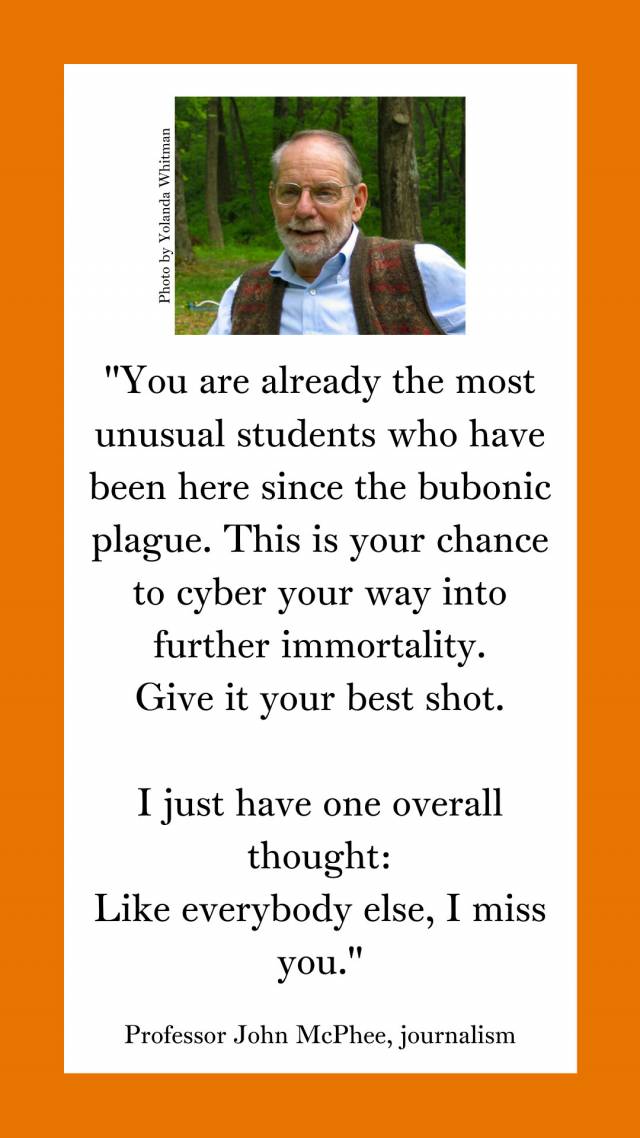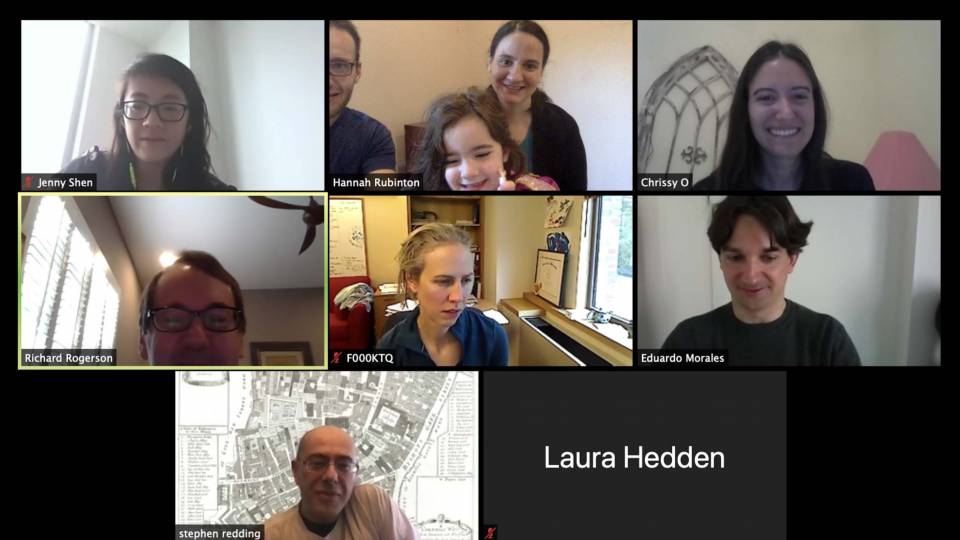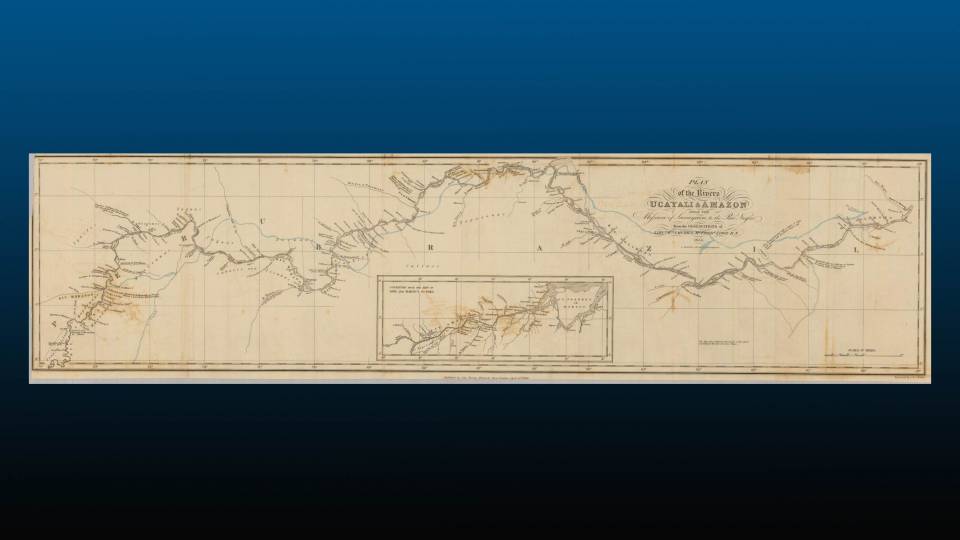On Monday, March 23, the day Princeton transitioned to remote instruction due to the coronavirus pandemic, the 16 undergraduates enrolled in one of the University’s most legendary courses were naturally curious. After all, their professor, John McPhee, a Ferris Professor of Journalism in Residence and a Pulitzer Prize-winning author, had always taught “Creative Nonfiction” on campus — for the last 45 years.
Hosting the seminar remotely via an online conferencing service was not the only first of the day. McPhee, a 1953 Princeton alumnus, also welcomed a new guest speaker to class — McPhee’s former student David Remnick, a 1981 alumnus and editor of The New Yorker.

On March 23, the first day of Princeton's transition to remote learning due to the coronovirus pandemic, John McPhee (top row, third from left), a Ferris Professor of Journalism in residence, took his legendary course "Creative Nonfiction" virtual, with guest David Remnick (top row, far left), a Princeton alumnus and editor of The New Yorker. Fifteen of the course's 16 students participated from around the globe.
In his apartment on West 86th Street in New York, Remnick lightly strummed a Gibson J-45 guitar while the students, all sophomores now scattered across the globe, joined the virtual session. McPhee told Remnick that the students were aware of Remnick’s college gap year spent as a busker in Paris’s Odéon metro station, and asked how much money he made during that time. “Be honest,” McPhee quipped. “About 59 dollars,” Remnick said.

McPhee, with his signature combination of humility and dry wit, shared a nugget of advice for all Princeton students in a roundup of faculty voices posted on the University’s main Instagram account.
The following three hours of the seminar were filled with a rich, wide-ranging conversation. The students, who were asked to identify their current location upon introducing themselves, posed probing questions about writing, the magazine industry and how each issue of The New Yorker comes together, down to the placement of cartoons and ads. Remnick shared his thoughts on the importance of reading to a young writer, how economics and technology influence art, and the unexpected trajectory of his career.
In a note McPhee later sent to his students, he wrote: “Searching for the mot juste for the way you shaped that seminar with David Remnick, the word ‘stupendous’ comes along readily. David, to say the least, was up to the challenge. If you were impressed by him, he was no less impressed by you.”
Also on March 23, McPhee, with his signature combination of humility and dry wit, shared a nugget of advice for all Princeton students in a roundup of faculty voices posted on the University’s main Instagram account. He wrote: “You are already the most unusual students who have been here since the bubonic plague. This is your chance to cyber your way into further immortality.”
McPhee has taught writing at Princeton since 1975. His course, “Creative Nonfiction” (originally called “Literature of Fact”), offered each spring, is open to Princeton sophomores, by application, and is limited to 16 students. To date, nearly 500 students have taken “Creative Nonfiction.”
In this profile, McPhee reflects on his writing process, what he learns from students and the structure of his renowned writing course.














